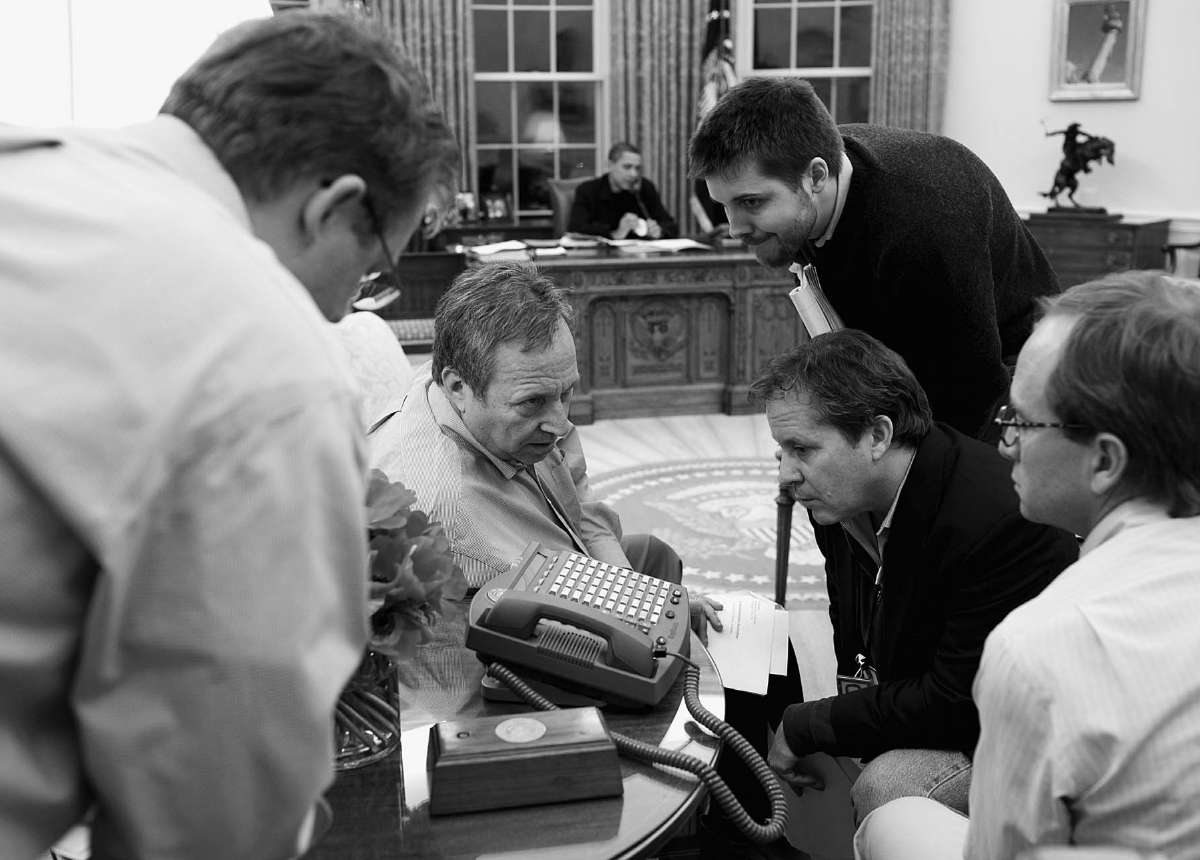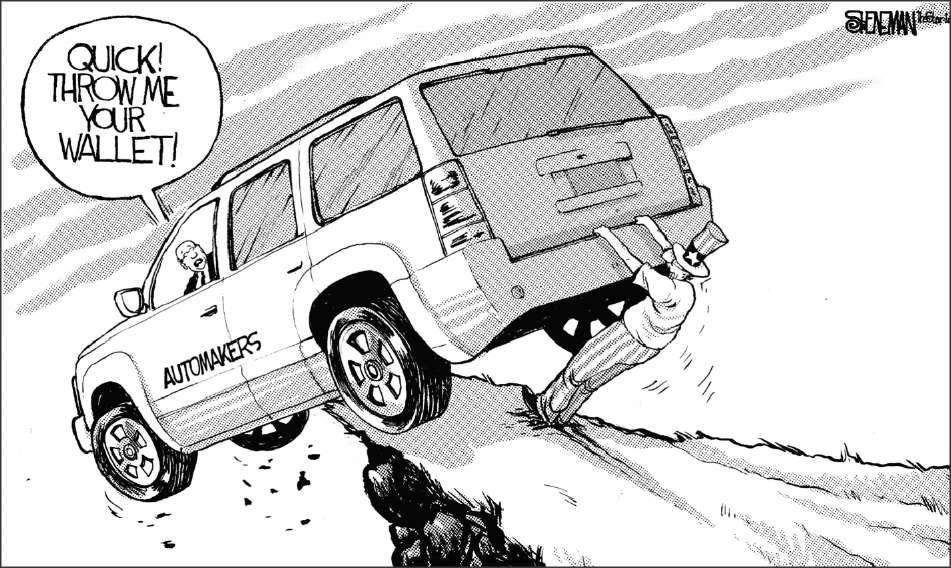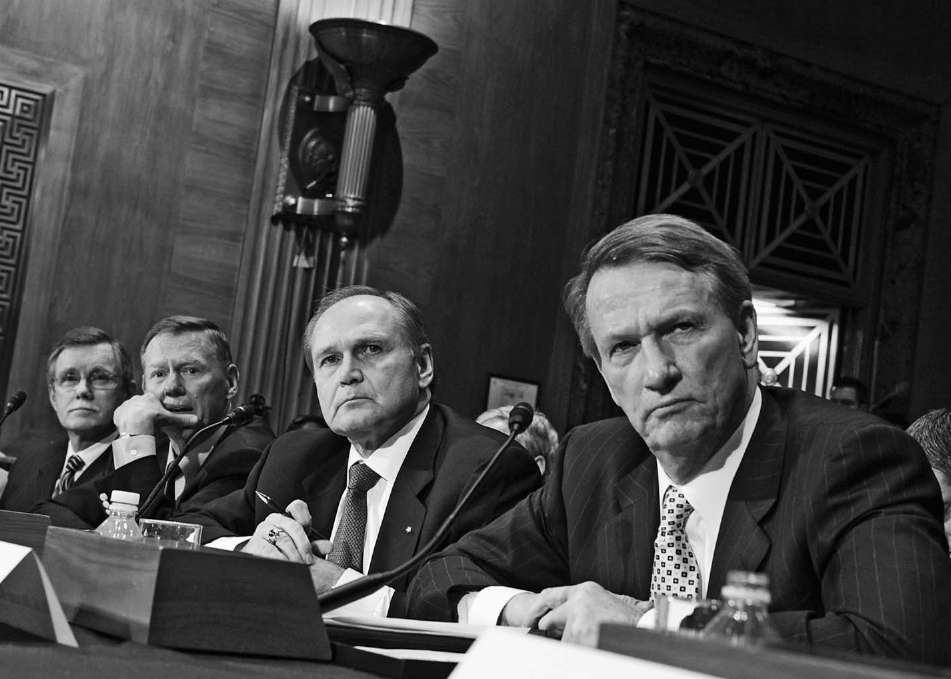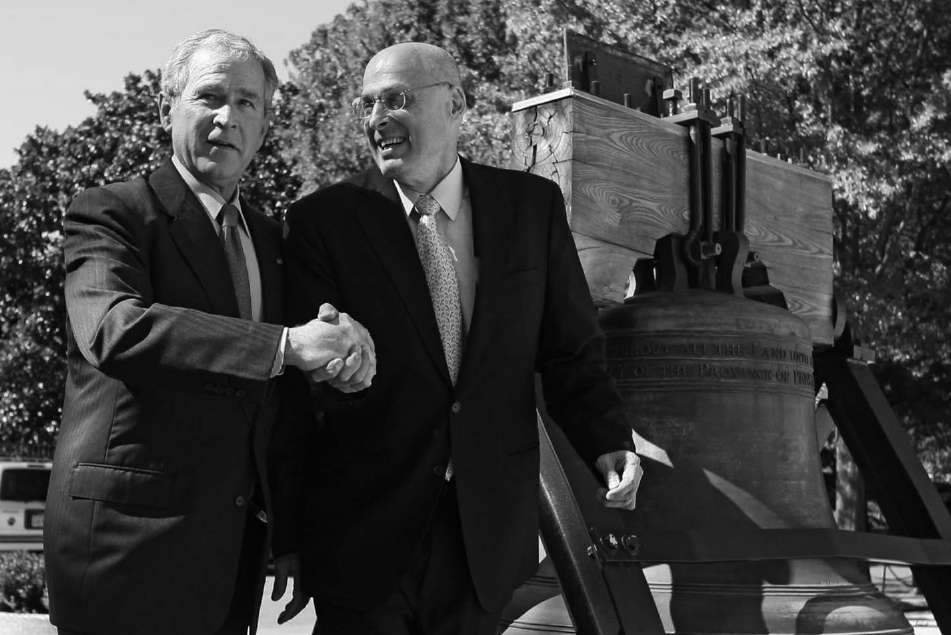Overhaul (23 page)
Authors: Steven Rattner

But behind the scenes, as the initial shock wore off, Wagoner was on an emotional rollercoaster. On Saturday morning, in a fury, he called a lieutenant. "I don't think this is even legal," he fumed. "I am going to go to the board and see what we can do. I'm thinking I should fight this." The next morning he called again, but he was calm. "I need to make it easy on Fritz. I'm not going to fight this," he said. Then, amazingly, he spoke of all the work he still had to get done and how he planned to go to the office at the Renaissance Center on Monday to watch Obama's speech. Colleagues called, pleading with him not to go. Wagoner liked to triangulate adviceâit was part of his style as a manager. Once enough people told him not to go to work, he relented. An aide urged instead, "Get in your car with Kathy and drive as far away from Detroit as you can." Wagoner and his wife left almost immediately for their South Carolina vacation home.
For us the weekend was a blur of paperworkâdrafts of the President's address, talking points for outreach calls, fact sheets, and formal responses to the viability plans that GM and Chrysler had submitted on February 17. To forestall errors and misunderstandings, we shared drafts of the responses with the automakers, expectingâand gettingâconsiderable protests about some of our language, especially from Chrysler, because of the flat statement that it was not viable as a standalone company. Many of us, including me, remained uneasy about giving Chrysler a lifeline, and we included in the fact sheet six difficult conditions the company would have to meet to qualify for the additional $6 billion of assistance that we were contemplating.
Harry, meanwhile, had had a surreal conversation with GM's Ray Young in which Ray tried to negotiate several points in our formal response to GM's viability plan. He was effectively trying to remove or blunt our many criticisms of GMâcriticisms that industry observers had been voicing for years. Harry listened patiently for a while, but finally exasperation took over. "Ray," he said, "this isn't a negotiation. These are our firmly held views. Of course you're free to disagree, but we haven't spoken to any industry observer who feels any better about the plan than we do."
On Sunday night, when we assembled in the Oval Office to hear President Obama make his courtesy calls in advance of Monday's speech, I was more than a little awed by what we had unleashed. My friend Arthur Sulzberger sent the first news flashes to my BlackBerry. I texted back, "I'm sitting in the Oval Office!" feeling the unreality of the moment.
For the President, of course, it was another evening of work, more momentous than some but less momentous than others he would surely face. And yet it marked a turning point in American industrial historyâa turn, I hoped, for the better. After his calls were completed, we fanned out in preassigned groups to other rooms in the West Wing for follow-up work. Deese and I conducted a background briefing call for reporters. More than a hundred members of the media dialed in to listen to a "senior administration official" preview the next day's announcements by the President.
On the verge of the largest industrial restructuring in history, accompanied by massive government financial support, the first question was "Why did you believe it was necessary to ask Chairman and CEO Wagoner to step aside?" From there, the questions mushroomed across the full range of our actions, but with a disproportionate number still focused on the fate of Rick Wagoner.
Simultaneously, Larry and Ron spoke with the "auto caucus"âinterested members of the Senate and House. When we reconvened afterward in Larry's office to compare notes, he was concerned about what he had heard. "I think we need something more on the demand side," he said. For all of Larry's reputation as an academic, his political instincts were sharp. And his instincts were now telling him that we'd been thinking too much like wonksâobsessively dwelling on financial restructuring and doing too little to promote a broad auto industry recovery.
We brainstormed how to fix the problem. It was Deese who surfaced the idea of trade-ins for gas guzzlers. The notion of boosting overall sales by offering rebates on trade-ins of old, fuel-inefficient cars had come up during the late-2008 discussions about a stimulus package and again in our early work on autos. A similar program had been a hit in Europe, where the German government had offered the equivalent of a $3,200 rebate for consumers willing to scrap cars at least nine years old and buy newer ones. But we'd dismissed the idea because such a program would require legislation, which we doubted could be enacted quickly enough and which might also distract Congress from more important parts of the President's agenda. Under tonight's circumstances, however, rebates suddenly seemed like a pretty good idea. "Let's try it," Larry decided. Brian labored through the night to work out a plan and insert new language into the President's speech, thus giving birth to Cash for Clunkers.
The speech was set for 11
A.M.
We assembled in Larry's office shortly beforehand and, following custom, trooped downstairs to the Oval to see if the President had any last-minute questions or requests. Of course, this was unlikelyâhis speech by now was loaded into the teleprompter and he didn't have to worry about questions from the press because there would be no Q&A. Going to see him was just another manifestation of the White House obsession with racking up face time with the President.
After a few minutes, we trailed Obama to a staging area in the State Dining Room. Gathered there were members of the Presidential Task Force on the Auto Industryâthe secretaries of energy, transportation, labor, and the like, as well as Tim and Larry. They were reporting for duty as what the communications department called potted plants. Often White House image makers don't want the President to make an important, controversial announcement by himself. So they arrange potted plants behind him to convey an added note of gravity and consensus. A protocol officer carefully lined up the officials and, just a few minutes behind schedule, they marched out to the foyer of the White House, where the announcement would take place. Brian, Ron, and I were left standing by ourselves in the State Dining Room; we had not been deemed worthy to serve as potted plants! I didn't careâthis was another aspect of Washington that I found unappealing. We made our own way to the foyer and stood behind the camera crews, craning for a glimpse of the President as he delivered his remarks.
The speech was clear and direct. "Let there be no doubt," he said, "it will take an unprecedented effort on all our partsâfrom the halls of Congress to the boardroom, from the union hall to the factory floorâto see the auto industry through these difficult times." But our groundbreaking rescue plan ended up having to compete with the news of Rick Wagoner's ouster, word of which had leaked to the media on Sunday and was getting more attention than it should have. I was stunned by commentaries suggesting that the government was somehow overreaching by replacing a CEO who had lost $11 billion of taxpayer money in three monthsâand had been asking for more. No private-sector investor would have put up with that; it was commonplace to make large infusions of new capital contingent upon a management change. Larry professed to be less surprised, while acknowledging that the reaction was stronger than he would have predicted.
Rightly or wrongly, the notion of Washington exerting its grip on an industrial icon was unnerving to many people. Governor Granholm called Rick a "sacrificial lamb." The
New York Times
published a truly moronic op-ed piece by William Holstein arguing that GM would now be "deprived" of Wagoner's expertise. Happily, several respected commentators praised our decision, notably Paul Ingrassia, a Pulitzer Prize-winning auto expert. His op-ed in the
Wall Street Journal
was headlined "Wagoner Had to Go: We Heard More Realism from the President Yesterday Than We've Heard from Detroit in Years."
From my standpoint, the controversy over Obama's decision to offer more assistance, contingent on the automakers' meeting strict deadlines, was more expected. Senator Corker, still smoldering over supplier assistance, called it a "major power grab." The
Journal's
editorial page started referring to GM snarkily as "Obama Motors" and "Government Motors." David Brooks on the
Times
op-ed page dismissed the deadlines as empty threats and concluded: "It would have been better to keep a distance from GM and prepare the region for a structured bankruptcy process. Instead, Obama leapt in. His intentions were good, but getting out with honor will require a ruthless tenacity that is beyond any living politician." I suspected Brooks had no clue what a "structured bankruptcy" meant. All the same, I was gratified at least that both the
Times
and the
Washington Post
praised the President in their editorials.
The single most interesting reaction I heard came not in the media but by telephone. I had barely returned to my office after the President's speech when Jimmy Lee of JPMorgan called. "We need to talk!" he barked.
"I thought there was nothing for us to talk about," I said innocently. "You said '$6.9 billion and not a penny less,' and that's not going to work for us."
"That was then and this is now," he said.
I chuckled silently and continued to play dumb. "What changed?" I asked.
"I didn't realize how important this was to the President," Jimmy said, somewhat fatuously.
I was surprised by how quickly Jimmy had picked up the phone, but not by his shift in attitude. This was precisely what we had hoped to accomplish when we'd urged the President to set a firm deadline for Chrysler, with liquidation to follow unless all the stakeholders agreed that the sacrifice would be shared.

We hunched around a balky speakerphone in the Oval Office, listening in as Barack Obama briefed legislators on his first major action on autos. He'd been President barely two months. That's Larry Summers, chief economic adviser, with the wrinkled brow; I'm at far right. At left is Press Secretary Robert Gibbs; between Summers and me are Brian Deese, standing, and Gene Sperling. Official White House Photo by Pete Souza

© Tribune Media Services, Inc. All rights reserved. Reprinted with permission.

They begged for a bailout but arrived by private jet: from right, GM CEO Rick Wagoner, Chrysler CEO Bob Nardelli, and Ford CEO Alan Mulally, with United Auto Workers chief Ron Gettelfinger, testifying before a Senate committee in November 2008.
AP Images/Evan Vucci

